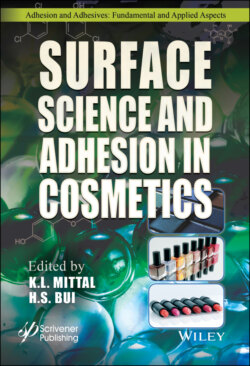Читать книгу Surface Science and Adhesion in Cosmetics - Группа авторов - Страница 77
3.6.2 Formulating with the Proper Photoinitiator
ОглавлениеThe ability to cure the coating with low intensity UV-A light sources requires PIs that operate within the wavelength of the GA-FL and LED units available in the cosmetic marketplace. As was shown in Figure 3.6 and Figure 3.7 the selection criteria for pigmented UV-A formulations require that the PIs used operate at 380 nm and above.
Figure 3.13 Chemical structures of methacrylates and acrylates that could be considered in UV nail gel technology. The following structures are: (a) DEGDMA (Di (Ethylene Glycol) Dimethacrylate), (b) TEGDMA (Tri (Ethylene Glycol) Dimethacrylate), (c) PEGDMA (Poly(Ethylene Glycol) Dimethyacrylate), (d) PPGDMA (Poly(Propylene Glycol) Dimethacrylate, (e) DDDMA (1,12-Dodecane Dimethacrylate), (f) HA (Hexylacrylate) (g) DEGEEA (Diethylene Glycol Ethylether Acrylate), (h) PPGDA (Poly (Propylene Glycol) Diacrylate), (i) EGMEA (Ethylene Glycol Methylether Acrylate) and (j) DDA (1,10-Decane Diacrylate).
As one can see in Figure 3.14 the best choice for both nail gel UV-A cure light units (GA-FL and LED) is the bis-acylphosphine oxide (BAPO) PI. The BAPO PI cleaves to give a two-photon photo-bleachable free radicals once exposed to either the UV-A GA-FL or LED unit. This PI has wide wavelength overlap and will function at 365 nm, 380 nm and 390 nm. The photobleaching enhances the optical penetration and results in lower delta E (lower yellowing of the cured coatings) values. In addition to this performance shown in Figure 3.6 and Figure 3.7 the BAPO also helps in the curing of pigmented coatings as shown in Figure 3.15. Since BAPO PI activates at 365 nm, 380 nm and 390 nm colored pigmented coatings will through-cure since the pigments absorbance is below these wavelengths.
The ability to cure the systems that are pigmented results in selection criteria where high percent transmission is needed to penetrate the coating all the way to the substrate. This so-called through-cure needs to be understood especially when using different pigments. These pigments under this test criterion showed that through-cure can be rated as follows (easiest to hardest): white, red & blue, yellow and black [10].
It is also well known that selection of pigmentation that is transparent to UV-A energy will enhance the through-cure process.
Figure 3.14 BAPO (bis-acylphosphine oxide) as a two-photon photo-bleachable PI. The BAPO PI cleaves to give a two-photon photo-bleachable free radicals once exposed to either the UV-A- GA-FL or LED unit. This type of PI is the preferred PI since it activates at 365 nm, 380 nm and 390 nm that the UV nail gel uses in the GA-FL or LED light source.
Figure 3.15 Pigment selection. The through-cure window is important for UV nail gels in that pigmentation will prevent the through-cure. Since the GA-FL and LED UV cure units operate at 380 nm and above the BAPO PI will through-cure these pigmented systems. These pigments under this test criterion showed that through-cure can be rated as follows (easiest to hardest); white, red & blue, yellow and black [10].
